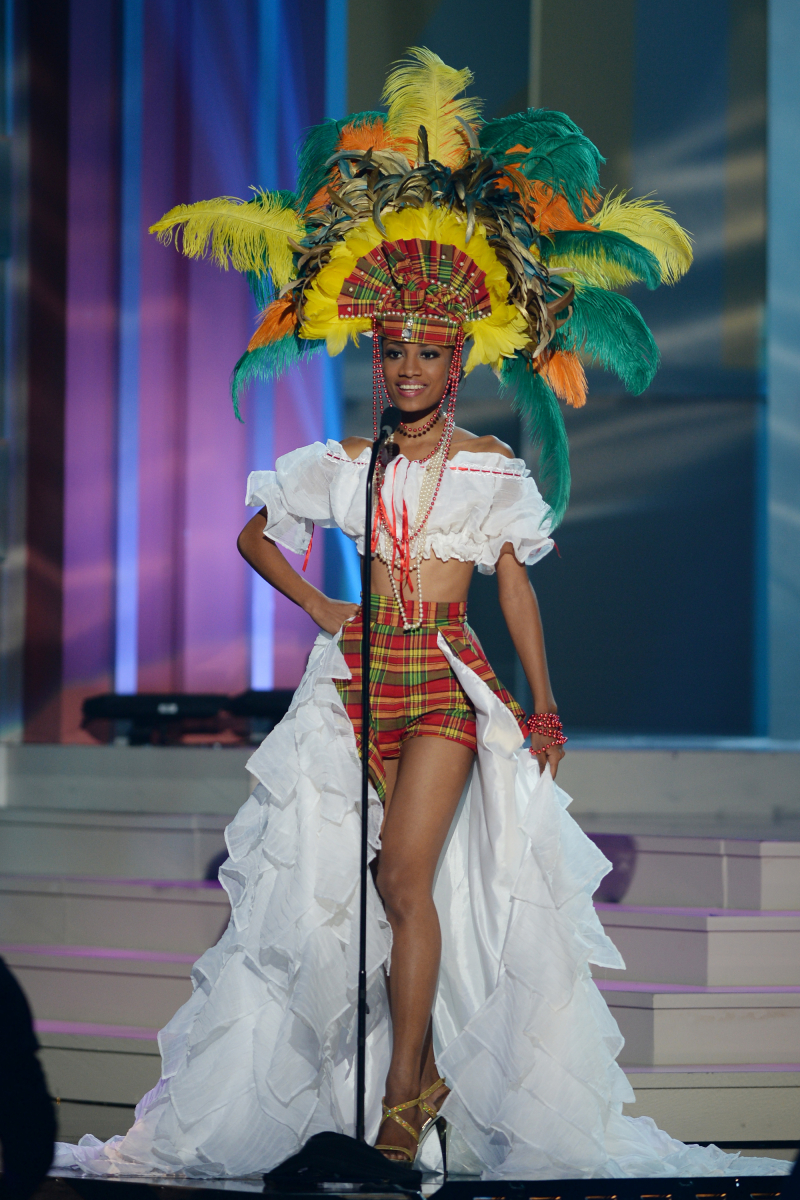Traditional dress
The Madras, also known as the Jip or Jupe, is Saint Lucia's national dress. The Wob Dwyiet (or Wobe Dwiette), a grand robe worn by the earlier French settlers, inspired the traditional five-piece costume, which is also recognized as the country's national dress. The Madras is the traditional dress of St. Lucian women and girls, and its name comes from the Madras cloth, a fabric used in the costume.
The Madras originated in pre-emancipation St. Lucia, when African slaves on the island would don the colorful dress during feast days. Slaves on the island were forced to wear the livre of the estate to which they belonged beginning in the late 17th century. Typically a single-color, one-piece item that began as a sarong and evolved into a simple tunic with arm and head holes and a simple rope belt.
The Madras is composed of five separate pieces of clothing. The costume consists of a white cotton or poplin blouse, known as a chimiz decolté or chemise decoltee in French Creole, that is finished with Broderie Anglaise and red ribbons. The second item is an ankle-length skirt trimmed with lace and red ribbons, with two gathers at the bottom of the garment. The third item is the costume's shorter outer skirt, which is made of Madras material. The Madras material is used once more in the fourth item, the Tête en l'air or tèt anlè. The final piece is a foulard, a triangular silk scarf pinned to the left shoulder, with the apex at the end of the elbow and tucked into the waist of the skirt.
Today, the Madras is nearly identical to the traditional costumes worn by other former French Caribbean colonies, including the neighboring islands of Martinique, Guadeloupe, and Dominica. During the 25th anniversary of the country's independence in 2004, the St. Lucian government launched a national awareness campaign. Both the Madras and the Wob Dwyiet, both recognized as national symbols, were included in this campaign. This is considered as one of the Unique Cultural Characteristics In Saint Lucia.










